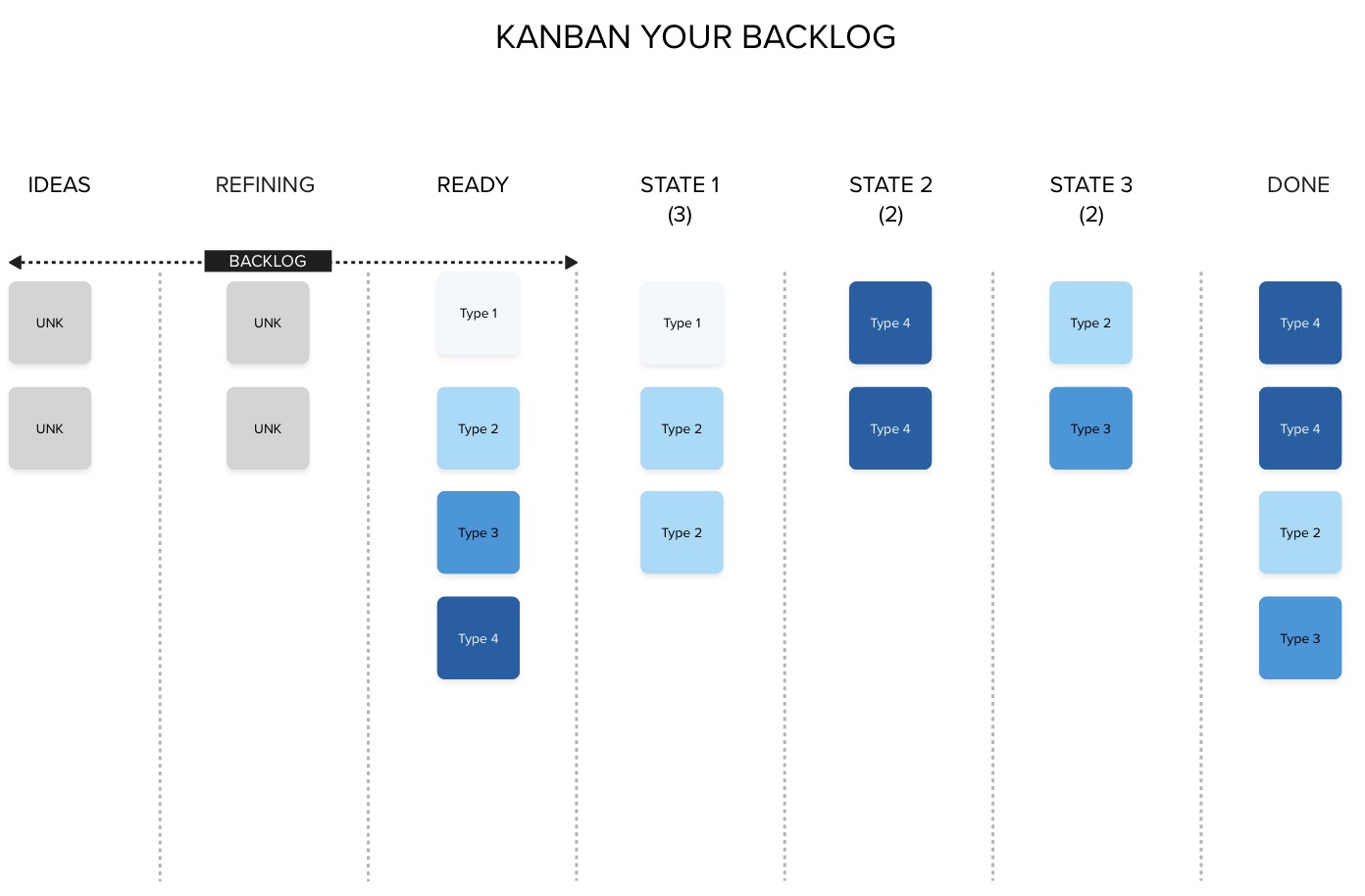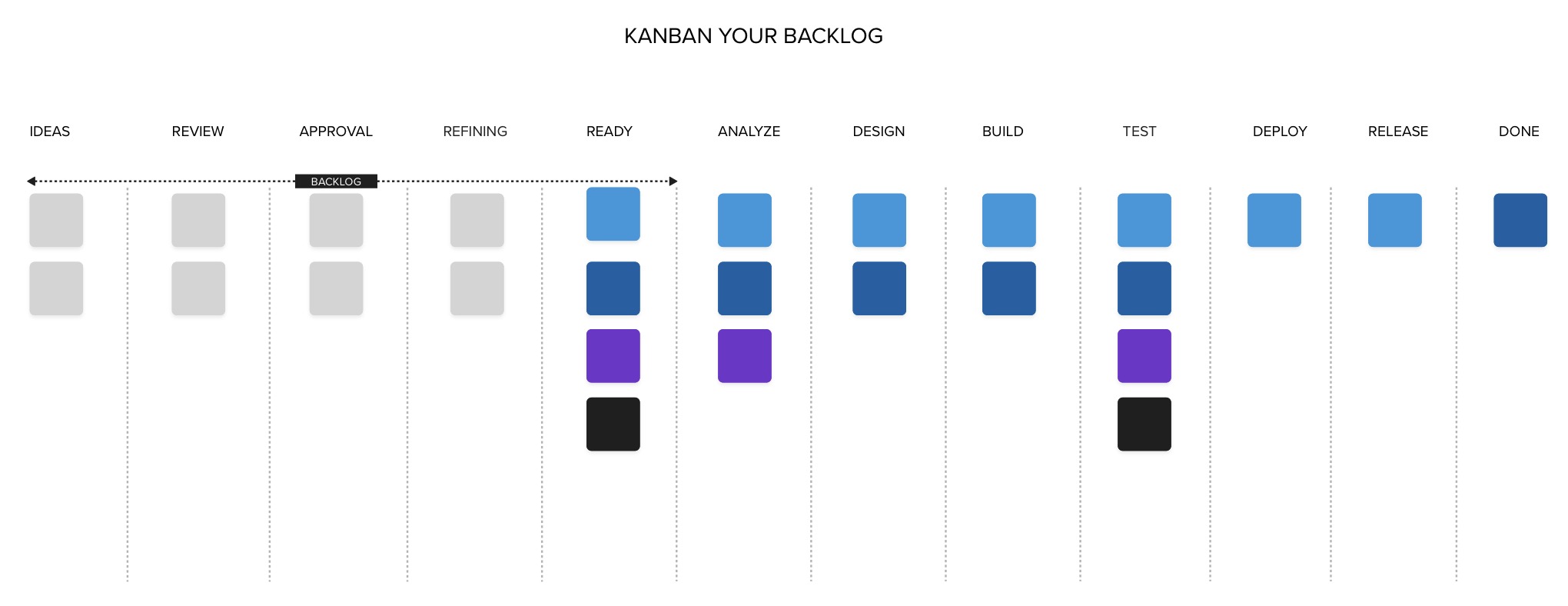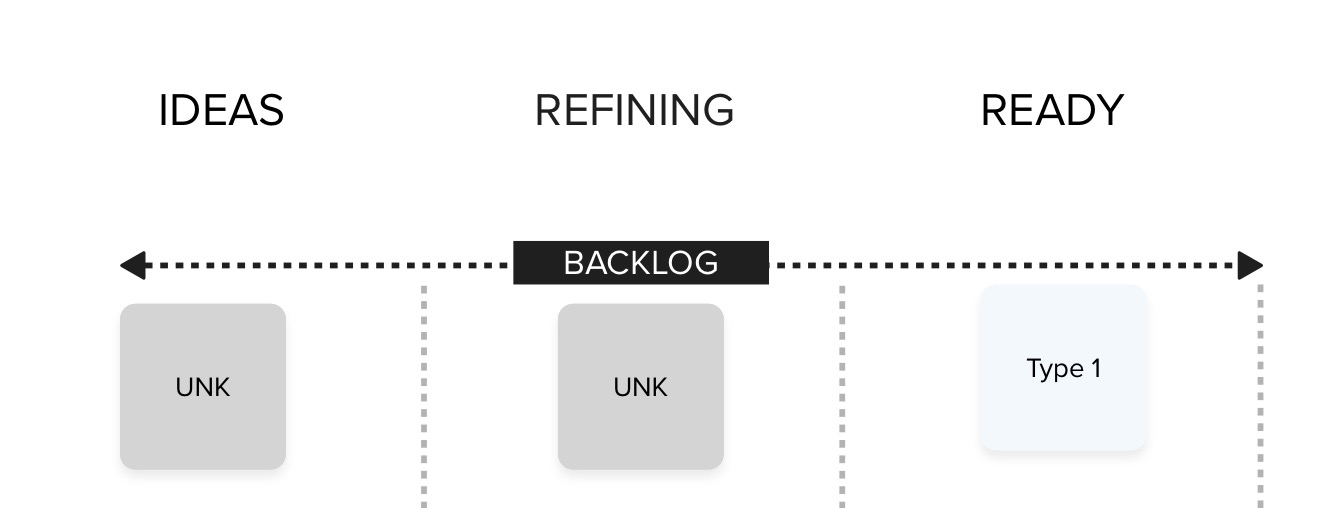Most people think of a backlog as a vertically scrolling to-do list, usually stuffed with items that haven’t been started yet. But that image is misleading—and limiting.
Yes, a backlog is a to-do list. But it’s more than that. It’s a constantly evolving, prioritized collection of valuable work that hasn’t been pulled into a team’s WIP yet. Every item in the backlog should be valuable, and each carries a cost of delay—the longer we wait to deliver it, the more potential value we’re deferring (or losing). Managing that delay is critical.
The traditional view—a single column called “Backlog” filled with ranked cards—doesn’t help us understand what’s happening upstream of the team. It doesn’t show which ideas are raw, which ones are being refined, and which ones are actually ready to be worked. And it definitely doesn’t help teams understand what’s changing in the world around them that might affect the backlog’s value.
A typical Kanban board has stages like:
- Backlog
- Analysis
- Design
- Build
- Test
- Deploy
- Release
- Done
These are usually the stages of active work. But the “Backlog” column itself can be expanded into its own mini-workflow. This is where things get interesting.
Instead of treating the backlog as a single holding bin, try visualizing it like this:
Ideas. raw thoughts, unvetted opportunities
Refining. items being shaped, estimated, broken down, discussed.
Ready for Work. clearly defined, valuable, and actionable

This layout helps teams and stakeholders see what’s coming toward them. It makes the upstream flow of work visible, and that visibility opens the door to conversations about what’s most important and why.
You can even extend this further if your organization has upstream activities that all work must pass through before reaching a final state in a backlog where you can pull it for work: Ideas, In-Review, Approved, Refining, and Ready for Work.

This approach does not eliminate the need to prune your backlog. In fact, it can make pruning easier. You’ll be able to see which items have been sitting in the same column for too long—those might be stale, low-value, or simply outdated. Backlog refinement becomes less about digging through a single endless list and more about tending to a visible, flowing system.
You can even apply metrics here. Want to know how long it takes to go from idea to delivery? You can start measuring cycle time across the whole value stream—not just the delivery portion.
Using Kanban this way transforms your backlog from a cluttered holding tank into a living, breathing part of your delivery system. It creates transparency, supports better prioritization, and helps everyone see where ideas come from and what’s happening to them along the way.
It’s not just a list. It’s a system. Visualize it accordingly.


